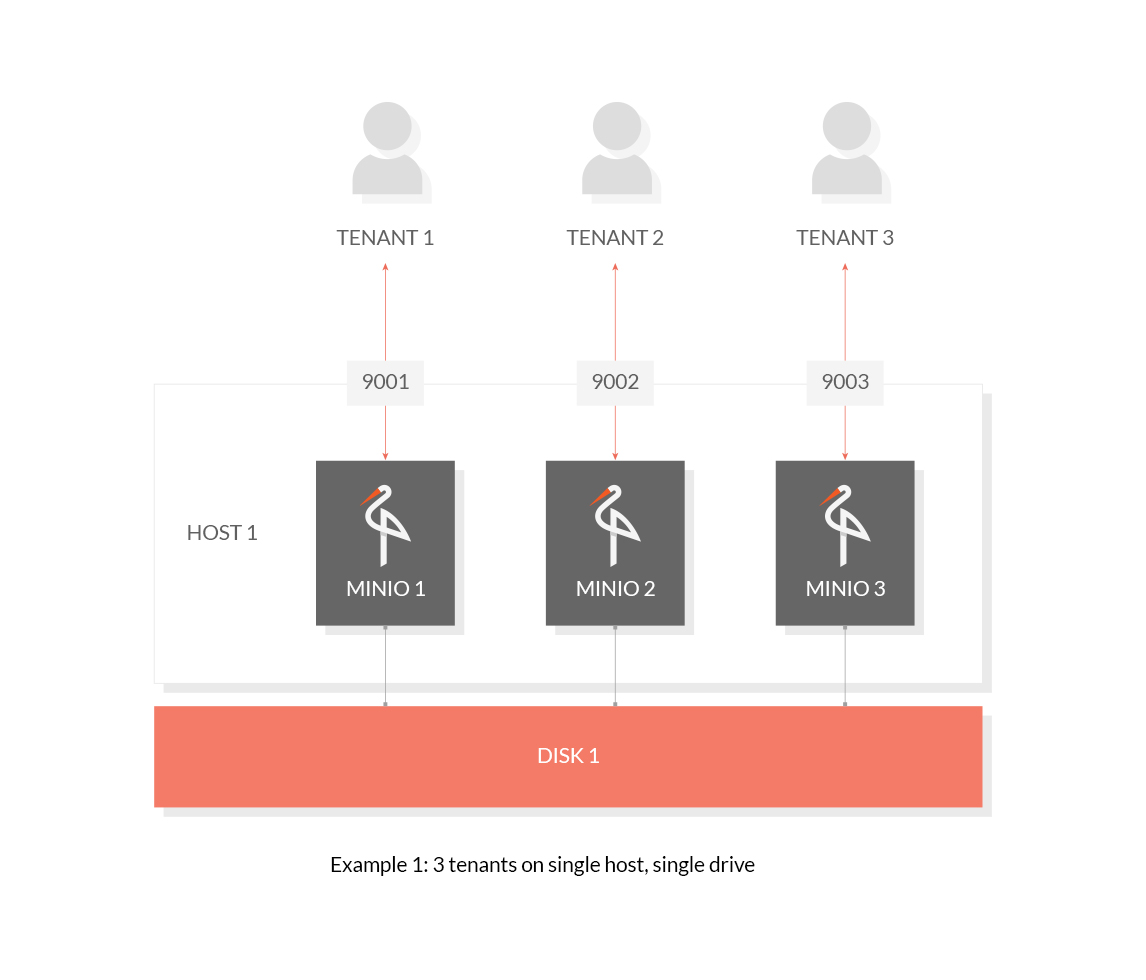- Sort Score
- Result 10 results
- Languages All
Results 1 - 10 of 13 for Groves (0.17 sec)
-
ci/official/wheel_test/README.md
to the actual TensorFlow wheel. 3. Creates a `requirements_lock_<python_version>.txt` file. 4. Updates the `requirements_lock_<python_version>.txt` file using a Bazel command. 5. Moves the updated `requirements_lock_<python_version>.txt` file to the `../wheel_test/` directory. ### How it Works in the Presubmit Job `_requirements_lock` files will be generated by the presubmit job. A detailed
Plain Text - Registered: Tue Apr 30 12:39:09 GMT 2024 - Last Modified: Thu Aug 31 18:17:57 GMT 2023 - 3.3K bytes - Viewed (0) -
README.md
require distributed deploying MinIO with Erasure Coding. For extended development and production, deploy MinIO with Erasure Coding enabled - specifically, with a *minimum* of 4 drives per MinIO server. See [MinIO Erasure Code Overview](https://min.io/docs/minio/linux/operations/concepts/erasure-coding.html) for more complete documentation. ### Stable
Plain Text - Registered: Sun Apr 28 19:28:10 GMT 2024 - Last Modified: Wed Feb 14 17:51:34 GMT 2024 - 18.7K bytes - Viewed (0) -
manifests/charts/README.md
apps may target different 'environments' which contain different instances and variants of Istio. - Better security: separate Istio components reside in different namespaces, allowing different teams or roles to manage different parts of Istio. For example, a security team would maintain the root CA and policy, a telemetry team may only have access to Prometheus,
Plain Text - Registered: Wed Apr 24 22:53:08 GMT 2024 - Last Modified: Wed Feb 07 17:53:24 GMT 2024 - 6.7K bytes - Viewed (0) -
operator/README.md
- [resources](https://kubernetes.io/docs/concepts/configuration/manage-compute-resources-container/#resource-requests-and-limits-of-pod-and-container) - [readiness probes](https://kubernetes.io/docs/tasks/configure-pod-container/configure-liveness-readiness-probes/) - [replica count](https://kubernetes.io/docs/concepts/workloads/controllers/deployment/)
Plain Text - Registered: Wed Mar 20 22:53:08 GMT 2024 - Last Modified: Sun Sep 17 08:27:52 GMT 2023 - 17.5K bytes - Viewed (0) -
docs/sts/README.md
| policy | _string_ or _[]string_ or _comma_separated_value_ | Canned policy name to be applied for STS credentials. (Mandatory) - This can be configured to any desired value such as `roles` or `groups` by setting the environment variable `MINIO_IDENTITY_OPENID_CLAIM_NAME` | ## Get started In this document we will explain in detail on how to configure all the prerequisites.
Plain Text - Registered: Sun Apr 28 19:28:10 GMT 2024 - Last Modified: Tue Oct 25 00:44:15 GMT 2022 - 7.8K bytes - Viewed (1) -
docs/throttle/README.md
If you have traditional spinning (hdd) drives, some applications with high concurrency might require MinIO cluster to be tuned such that to avoid random I/O on the drives. The way to convert high concurrent I/O into a sequential I/O is by reducing the number of concurrent operations allowed per cluster. This allows MinIO cluster to be operationally resilient to such workloads, while also making sure the drives are at optimal efficiency and responsive.
Plain Text - Registered: Sun Apr 28 19:28:10 GMT 2024 - Last Modified: Sat Feb 12 00:51:25 GMT 2022 - 2.4K bytes - Viewed (0) -
docs/config/README.md
In most setups this is sufficient to heal the content after drive replacements. Setting `max_sleep` to a *lower* value and setting `max_io` to a *higher* value would make heal go faster.
Plain Text - Registered: Sun Apr 28 19:28:10 GMT 2024 - Last Modified: Mon Sep 11 21:48:54 GMT 2023 - 17.7K bytes - Viewed (0) -
docs/erasure/README.md
drives. Therefore, the number of drives you present must be a multiple of one of these numbers. Each object is written to a single erasure-coding set. Minio uses the largest possible EC set size which divides into the number of drives given. For example, *18 drives* are configured as *2 sets of 9 drives*, and *24 drives* are configured as *2 sets of 12 drives*. This is true for scenarios when running MinIO as a standalone erasure coded deployment. In [distributed setup however node (affinity)...
Plain Text - Registered: Sun Apr 28 19:28:10 GMT 2024 - Last Modified: Thu Sep 29 04:28:45 GMT 2022 - 4.1K bytes - Viewed (0) -
docs/erasure/storage-class/README.md
on 16 drive MinIO deployment. If you use eight data and eight parity drives, the file space usage will be approximately twice, i.e. 100 MiB file will take 200 MiB space. But, if you use ten data and six parity drives, same 100 MiB file takes around 160 MiB. If you use 14 data and two parity drives, 100 MiB file takes only approximately 114 MiB.
Plain Text - Registered: Sun Apr 28 19:28:10 GMT 2024 - Last Modified: Tue Aug 15 23:04:20 GMT 2023 - 5.8K bytes - Viewed (1) -
docs/multi-tenancy/README.md
minio server --address :9003 /data/tenant3 ```  ### 1.2 Host Multiple Tenants on Multiple Drives (Erasure Code) Use the following commands to host 3 tenants on multiple drives: ```sh minio server --address :9001 /disk{1...4}/data/tenant1 minio server --address :9002 /disk{1...4}/data/tenant2 minio server --address :9003 /disk{1...4}/data/tenant3 ```Plain Text - Registered: Sun Apr 28 19:28:10 GMT 2024 - Last Modified: Thu Sep 29 04:28:45 GMT 2022 - 3K bytes - Viewed (0)